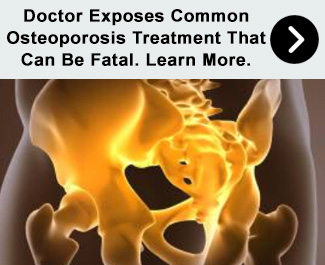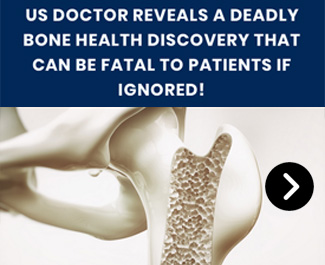3. Stooped Posture
LEARN MORE NOW
Osteoporosis? How To Reverse Bone Loss & Increase Bone Density. SEE IT
Bone Health Discovery Can Be Fatal If Ignored. SEE IT
Doctor Cracks The "Bone Code" For Preventing And Treating Osteoporosis. SEE IT
If You Have Osteoporosis, Do This Immediately. SEE IT
Doctor Exposes Deadly Common Osteoporosis Treatments. SEE IT
The compression fractures can also cause the spine to curve forward, leading to a stooped posture, a condition also known as postural kyphosis, round back, or dowager hump.
Severe osteoporosis can cause a curvature in the upper spine. This is due to fractures in the vertebrae, which weaken the spine and cause it to bend forward.
2. Weak Grip Strength
Osteoporosis affects the bones in the hands. It can cause bone loss in the hands, making them weaker and more susceptible to fractures. This can make it difficult to grip and hold objects, leading to weaker grip strength.
Loss of muscle mass and strength can also be attributed to decreased physical activity caused by pain and limited mobility due to fractures caused by osteoporosis.
1. Tooth Loss
In osteoporosis, the bones in the jaw are also affected. They become weak. This can impact the teeth since the bones in the jaw support them.
If the jawbone becomes weak due to osteoporosis, it can result in tooth loss. The decrease in bone density in the jaw brought about by osteoporosis can also lead to gum disease, infections, and inflammation that can damage the teeth and the supporting bone.
Treatments And Care
It is important to treat osteoporosis because it is a condition that can significantly increase the risk of fractures and other complications, leading to reduced quality of life and disability.
Treatment of osteoporosis can help to slow or stop bone loss, increase bone density, and reduce the risk of fractures.
Early detection and treatment of osteoporosis are essential to prevent complications and improve outcomes.
Screening for osteoporosis is recommended for women over the age of 65 and men over the age of 70, as well as for individuals with certain risk factors, such as a family history of osteoporosis, low body weight, or a history of fractures. (3)
9. Lifestyle Changes
Certain lifestyle changes can help to improve bone health and reduce the risk of fractures. Regular weight-bearing exercises, such as walking, jogging, or strength training, can help to strengthen bones and reduce the risk of fractures. Exercise also improves balance and coordination, which can reduce the risk of falls.
A balanced diet rich in calcium and vitamin D can keep the bones strong. Calcium is found in leafy green vegetables, dairy products, and fortified foods. Vitamin D is found in fatty fish, egg yolks, and fortified foods.
Smoking has been shown to accelerate bone loss and increase the risk of fractures. Quitting smoking can help to slow down bone loss and improve overall health.
Limiting alcohol consumption to no more than one drink per day for women and two drinks per day for men may also help to improve bone health.
8. Calcium And Vitamin D Supplements
Calcium is a key mineral that helps to build and maintain strong bones. Vitamin D plays an important role in helping the body absorb calcium from food and supplements.
The combination of calcium and vitamin D is crucial for bone health, as calcium is responsible for bone building and maintenance while vitamin D helps with the absorption of calcium.
Therefore, even if you consume sufficient amounts of calcium, it may not be effectively utilized if you are deficient in vitamin D.
(continued next page)
Osteoporosis? How To Reverse Bone Loss & Increase Bone Density. SEE IT
Bone Health Discovery Can Be Fatal If Ignored. SEE IT
Doctor Cracks The "Bone Code" For Preventing And Treating Osteoporosis. SEE IT
If You Have Osteoporosis, Do This Immediately. SEE IT
Doctor Exposes Deadly Common Osteoporosis Treatments. SEE IT


